- NCMPS-MontessoriAdmin
- January 15, 2017
- Launching a Public Montessori School
Montessori School Design
Montessori School Design
Prepared Environments for Learning and Living
Learning never takes place in a vacuum. Optimal education requires optimal surroundings, and for more than a century Montessori environments have set the standard for school design that supports deep learning, peaceful and purposeful social development, and vibrant communities of practice. Grounded in core principles of order, respect, and freedom within limits, Montessori environments are intentionally designed to foster concentration, collaboration and community.
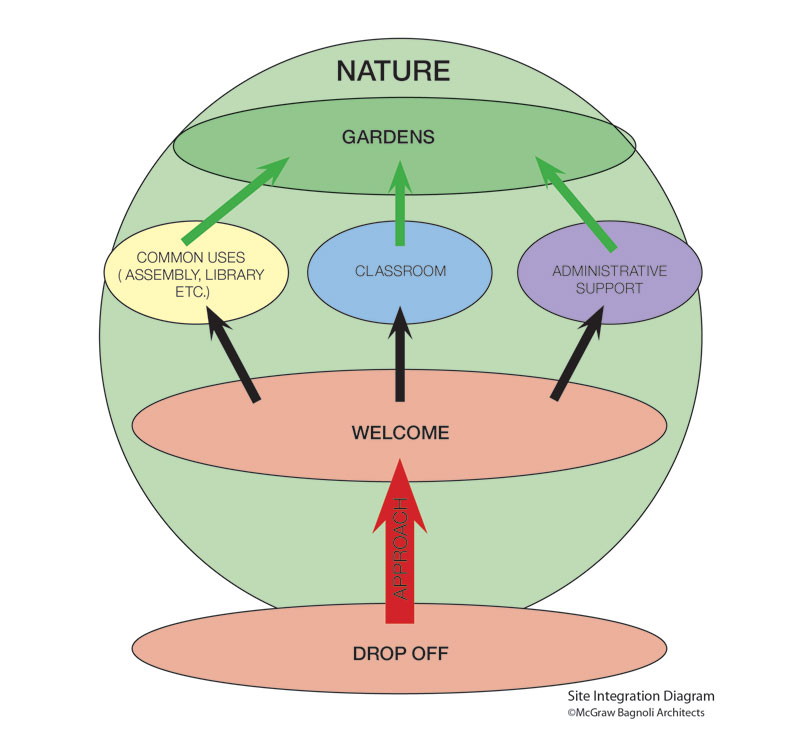
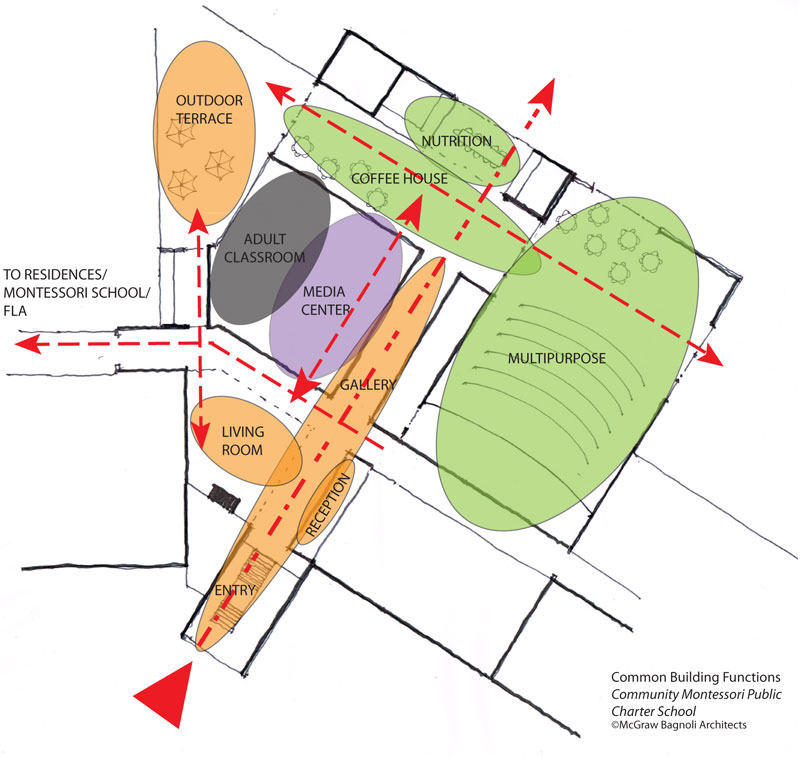

The moment you step on campus, it’s clear this is a special place; every detail communicates our commitment to intergenerational, life-long learning and profound respect for every member of the community.
Kathleen Guinan, Executive Director Crossway Community Inc.
Plainly, the environment must be a living one, directed by a higher intelligence, arranged by an adult who is prepared for his mission.
Maria Montessori
Montessori School Design

Site
The school is designed as a village, with a variety of communal spaces, such as libraries, gardens, cafes, and amphitheaters, preferably set within a natural environment.
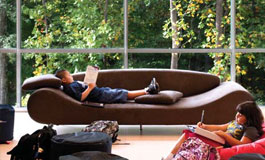
Building
A simple, uncluttered aesthetic guides the design, which features natural light and warm materials, close connections between indoor and outdoor environments, and common use spaces for communal learning and reflection.
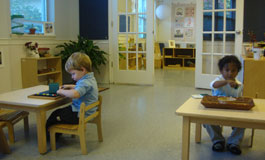
Classroom
All spaces accommodate free movement, small group and individual lessons, and courteous interaction among adults and children, encouraging independent investigation and learning both inside and out.

Community
Strong bonds between students, adults, as well as the neighborhood that surround the school are essential for establishing respect, trust, and a template for healthy development.

Order
Meticulous attention to every detail of the learning environment.

Independence
Student-centered learning is enabled by a highly enriched and structured classroom context. Adults support independence by maintaining a thoroughly prepared environment.
Since 1907, when the first Casa dei Bambini opened in Rome, Maria Montessori’s idea of the prepared environment has guided the design of both indoor and outdoor Montessori spaces throughout the world.
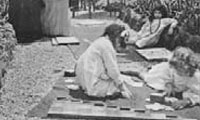
1907
Casa dei Bambini
Rome, Italy
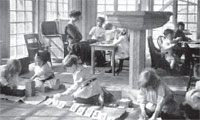
1913
First Montessori School in the US Tarrytown, New York
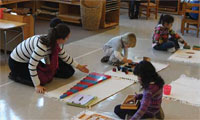
1989
MacDowell Montessori School Milwaukee, Wisconsin

2009
Annie Fisher Montessori Magnet School Hartford, Connecticut

NCMPS partners with the architectural firm StudioMB on the design of Montessori learning environments specially suited to individual sites and specifications.

 Cheyenne is a Seminole and Chilean woman, advocate for Indigenous people and a former Miss Indian World. She has utilized her platform as an ambassador to advocate for environmental protections of the Florida Everglades, overturn adverse stereotypes and stigmatizations of mental health in tribal communities, encourage healing through identity and self love, and combat the negative, stereotypical narrative of Native and Indigenous people through education.
Cheyenne also provides motivational speaking presentations, empowerment workshops, pageantry coaching, cultural and historical consulting, hosts and emcees, and presents on topics such as culture as prevention, identity, human trafficking, domestic violence, and much more. She strives for authenticity and to live a healthy life physically, mentally and spiritually through her culture and teachings.
Cheyenne is a Seminole and Chilean woman, advocate for Indigenous people and a former Miss Indian World. She has utilized her platform as an ambassador to advocate for environmental protections of the Florida Everglades, overturn adverse stereotypes and stigmatizations of mental health in tribal communities, encourage healing through identity and self love, and combat the negative, stereotypical narrative of Native and Indigenous people through education.
Cheyenne also provides motivational speaking presentations, empowerment workshops, pageantry coaching, cultural and historical consulting, hosts and emcees, and presents on topics such as culture as prevention, identity, human trafficking, domestic violence, and much more. She strives for authenticity and to live a healthy life physically, mentally and spiritually through her culture and teachings. 
